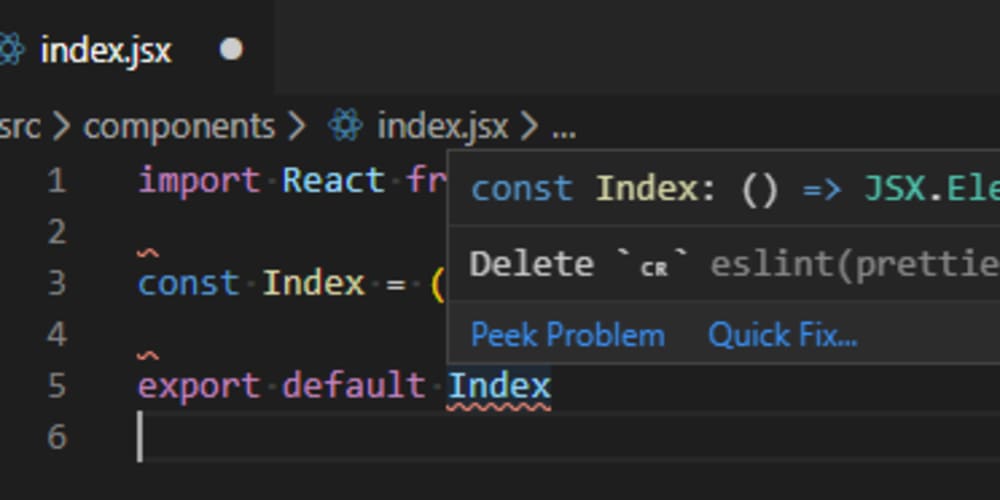- 23 Posts
- 38 Comments

 1·11 months ago
1·11 months agoNeither does Git though.
Doesn’t it, though? I mean, you can update a submodule’s history directly from the consumer package. That’s the whole point of submodules. Otherwise you would be better off by just wget something into your project.
I don’t see why using submodules as a package manager should excuse their endless bugs.
I don’t know what are these “endless bugs” you’re talking about. Submodules might have a UX that’s rough on the edges, but there are really no moving parts in them as they basically amount to cloning a repo and checking out a specific commit.
Do you actually have any specific, tangible issue with submodules? Even in the cases you’re clearly and grossly misusing them
Aside from the obvious UX disaster, Git has some big issues:
I find this blend of claims amusing. I’ve been using Git for years on end, with Git LFS and rebase-heavy user flows, and for some odd reason I never managed to stumble upon these so-called “disasters”. Odd.
What I do stumble upon are mild annoyances, such as having to deal with conflicts when reordering commits, or the occasional submodule hiccup because it was misused as a replacement for a package manager when it really shouldn’t, but I would not call any of these “disasters”. The only gripe I have with Git is the lack of a command to split a past commit into two consecutive commits (a reverse of a squash commit), specially when I accidentally bundled changes to multiple files that shouldn’t have been bundled. It’s nothing an interactive rebase doesn’t solve, but it’s multiple steps that could be one.
Can you point out what is the most disastrous disaster you can possibly conceive about Git? Just to have a clear idea where that hyperbole lies.

 7·1 year ago
7·1 year agoWhat is the advantage of rebasing?
You get a cleaner history that removes noise from the run-of-the-mill commit auditing process. When you audit the history of a repo and you look into a feature branch, you do not care if in the middle of the work a developer merged with x or y branch. What you care about is what changes were made into mainline.

 12·1 year ago
12·1 year agoBecause this is a casual discussion and that’d be more effort than I’m willing to put in.
I didn’t asked you to write a research paper. You accused Git of suffering from usability issues and I asked you to provide concrete examples.
And apparently that’s an impossible task for you.
If you cannot come up with a single example and instead write a wall of text on you cannot put the effort to even provide a single opinion… What does this say about your claims?

 1·1 year ago
1·1 year agoI think nobody talks about it because it doesn’t show history
What do you mean it doesn’t show history? It’s perhaps the only thing it handles better than most third-party git GUIs.

 1·1 year ago
1·1 year agoIt’s not and no one cares about numbers anymore.
The only people who ever cared about svn’s numbering scheme were those who abused it as a proxy to release/build versions, which was blaming the tools for the problems they created for themselves.

 2·1 year ago
2·1 year agodeleted by creator

 5·1 year ago
5·1 year agoI initially found git a bit confusing because I was familiar with mercurial first, where a “branch” is basically an attribute of a commit and every commit exists on exactly one branch.
To be fair, Mercurial has some poor design choices which leads to a very different mental model of how things are expected to operate in Git. For starters, basic features such as stashing local changes were an afterthought that you had to install a plugin to serve as a stopgap solution.

 13·1 year ago
13·1 year agothink the lack of UI
Even git ships with git-ui. It’s not great, but just goes to show how well informed and valid your criticism is.

 1·1 year ago
1·1 year agoSure if you never branch, which is a severely limited way of using git.
It’s quite possible to use Git without creating branches. Services like GitHub can automatically create feature branches for you as part of their ticket-management workflow. With those tools, you start to work on a ticket, you fetch the repo, and a fancy branch is already there for you to use.
You also don’t merge branches because that happens when you click on a button on a PR.

 2·1 year ago
2·1 year agoI think a common misconception is that there’s a “right way to do git” - for example: “we must use Gitflow, that’s the way to do it”.
I don’t think this is a valid take. Conventions or standardizations are adopted voluntarily by each team, and they are certainly not a trait of a tool. Complaining about gitflow as if it’s a trait of Git is like complaining that Java is hard because you need to use camelCase.
Also, there is nothing particularly complex or hard with gitflow. You branch out, and you merge.

 23·1 year ago
23·1 year agoNonetheless
You didn’t provided a single concrete example of something you actually feel could be improved.
The most concrete complain you could come up was struggling with remembering commands, again without providing any concrete example or specific.
Why is it so hard for critics to actually point out a specific example of something they feel could be improved? It’s always “I’ve heard someone say that x”.

 133·1 year ago
133·1 year agoGit is ugly and functional.
I don’t even think it’s ugly. It just works and is intuitive if you bother to understand what you’re doing.
I think some vocal critics are just expressing frustration they don’t “get” a tool they never bothered to learn, particularly when it implements concepts they are completely unfamiliar with. At the first “why” they come across, they start to blame the tool.

 46·1 year ago
46·1 year agoGit is no different. But it sure feels like it never took the idea of a polished user experience seriously.
I’ve seen this sort of opinion surface often,but it never comes with specific examples. This takes away from the credibility of any of these claims.
Can you provide a single example that you feel illustrates the roughest aspect of Git’s user experience?
Edit: just noticed this post is over 10 years old.
It would be helpful if the title was edited to feature the release date. Context is king. So many things are absurd with regards to the current state, but are sorely lacking a few years ago.

 8·1 year ago
8·1 year agoHighly recommended
I agree. Once we get a hang of the value that bisect brings, one unintended consequence is that we start to value atomic commits a whole lot more. There is nothing more annoying than bisecting a bug and suddenly stumbling upon a commit that does it all: updates dependencies, touches everything under the sun, does cleanup commits for unrelated files, etc. Yuck.

 2·1 year ago
2·1 year ago“GitUI is amazing, although unusable.”

 1·2 years ago
1·2 years agoYou should also check out git commit --fixup … paired with git rebase -i --autosquash …
Superb tip. I’m reading up on the feature, and it sounds like the process I’ve just learned but on steroids. Thanks for the pro tip!












Not true. The whole point of monorepos is that you track everything in a single repo. There is absolutely no requirement or constraint to avoid using specific features of specific VCSs or even package managers.